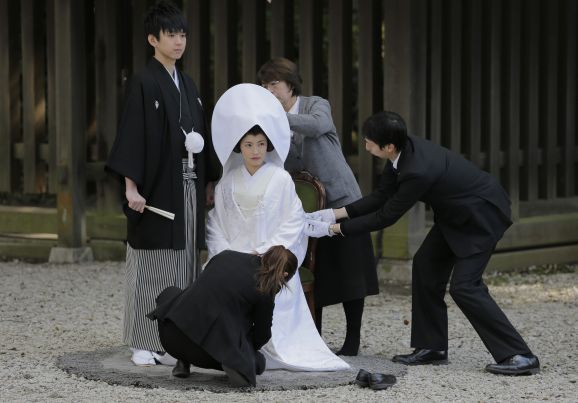
(Picture by AP)
The picture today in Japan Today is of a Shinto wedding at Meiji Jingu in Tokyo. I don’t have statistics to hand, but I’ve heard there’s a slight trend back towards Shinto-style weddings in recent years, after the fashion for wedding chapels swept the nation and captured something like 70% of the market. (Shinto marriages were down to just 12%, with the rest at public venues.)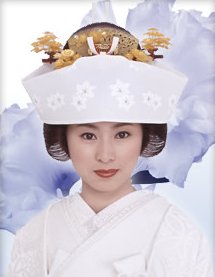
I’m no expert on wedding clothes, but I gather the style of hat in the above picture is the sweeping Wataboshi (cotton hat), rather than the Tsunokakushi (pictured right). The Wataboshi apparently is akin to a veil, shielding the bride’s face from others so that only the husband gets to see her in full.
The Tsunaboshi on the other hand means ‘hide the horns’, and refers to the horns of jealousy which women bear. It symbolises the intention of the bride once married to cover up her own ‘selfish’ feelings. No wonder Japanese women are widely reputed to make the best wives!
According to the website, factsanddetails.com, the bride’s wedding costume used to include a small dagger like those used in ritual suicides in case she dishonored her husband. The white dress is not only a symbol of purity but of mourning, because the bride is ‘dying’ to her old family and joining a new one.
Factsanddetails also say that “Shinto weddings ceremonies usually last around 20 to 30 minutes. The couple is blessing by a Shinto priest, they sip some sake and a say few words. There is no best men and no giving the bride away. Sometimes rings are exchanged. After the ceremony the families of the bride’s and groom are formally introduced to each other. The wedding ceremony is usually only attended by close family members. Most of the guests for the wedding don’t even show up for the ceremony. They only go to the wedding party afterwards.”
***********************************************************************
For absolutely everything about Japanese weddings, click here.
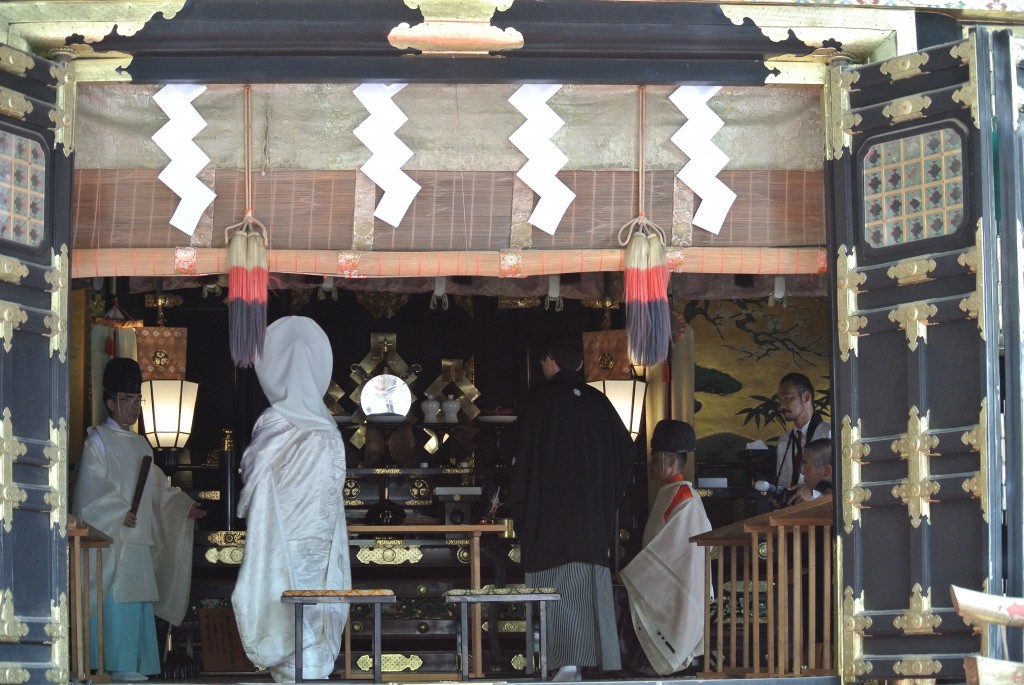
Wedding ceremony at Futarasan Jinja, Nikko
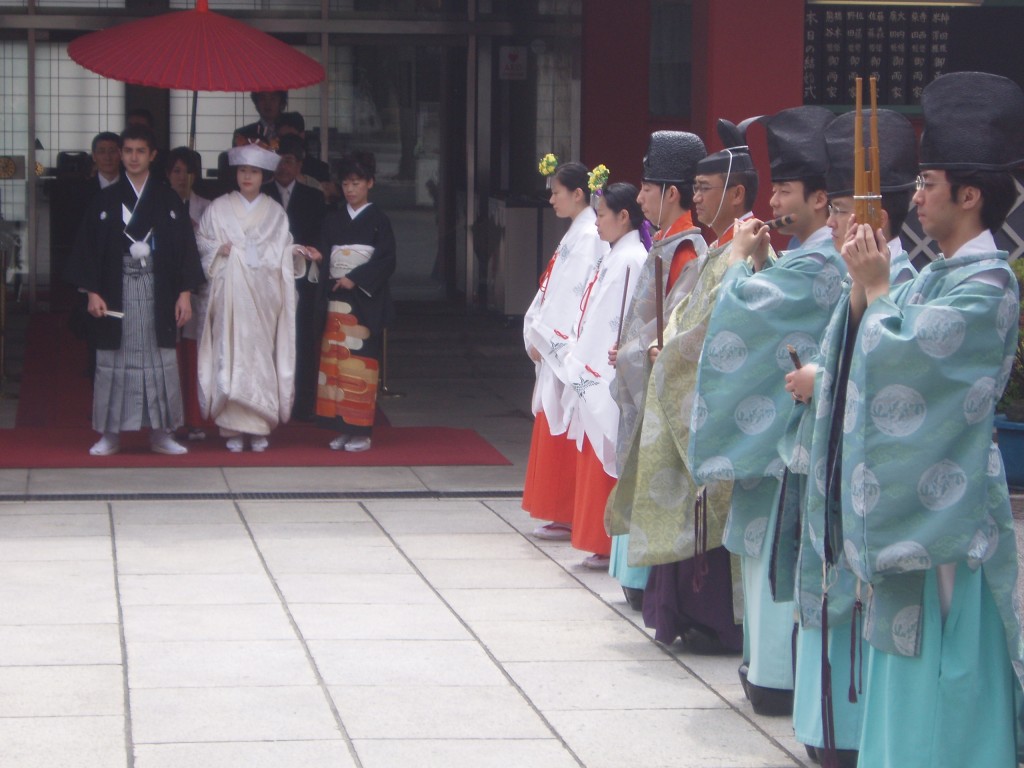
A newly married pair emerge from a Tokyo shrine
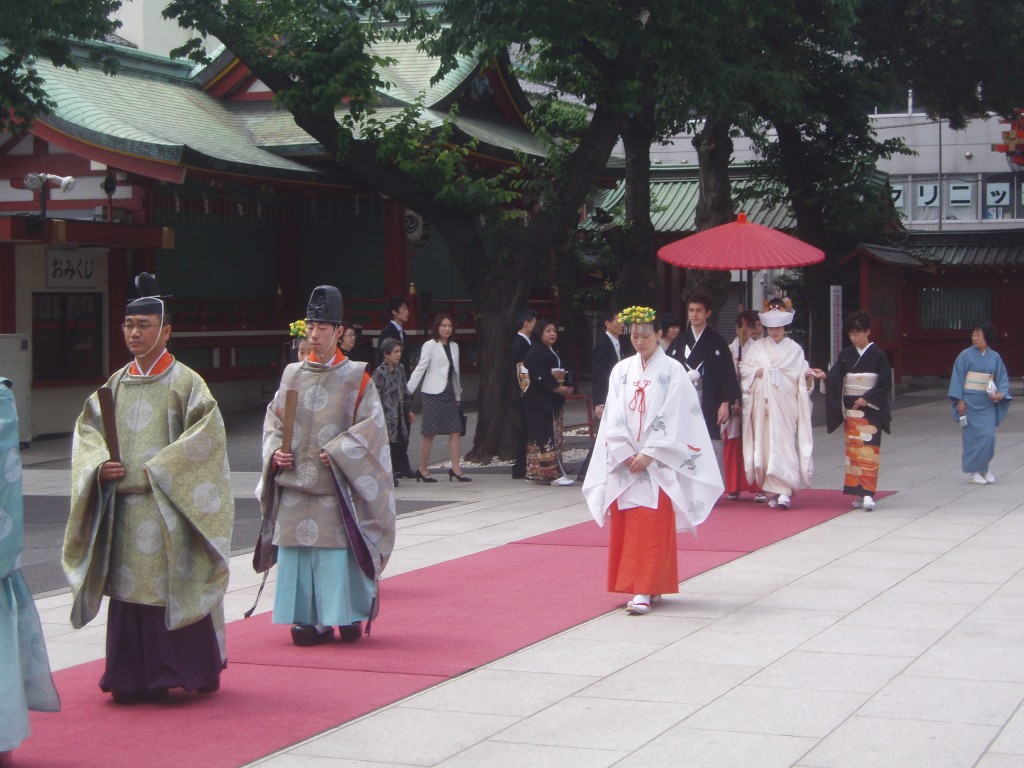
A red carpet procession for the newly married pair, led by priests and miko to a future of conjugal bliss – maybe

Leave a Reply